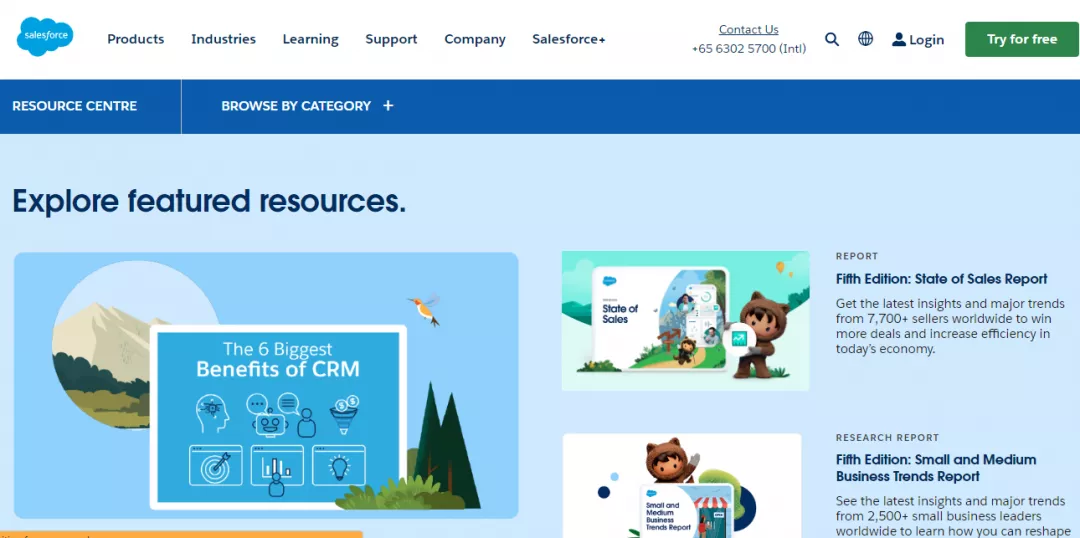What is a Pillar Page?
A pillar page is a type of content that acts as a comprehensive guide and covers all the aspects of a specific topic.
Usually, it is a long-form webpage or blog post that covers a broad range of information related to the topic. It is then linked to other more detailed subtopics.
The term "pillar" means that this topic offers solid foundational support for other related content pieces that are called "clusters".
These clusters focus on more specific subtopics that fall under the category of pillar pages. The purpose is to make a hierarchical website structure both for users and search engines to understand the relationship between different topics.
Topic clusters vs pillar pages
Both are related concepts but have some differences.
A topic cluster as its name indicates is a cluster or group of interconnected content pieces. They all focus on different aspects of a central topic.
These clusters are usually optimised for specific keywords that are related to the main topic. All these clusters are then linked together internally and with the main central topic.
On the other hand, a pillar page is a detailed piece of content that acts as a central hub or main topic page to which those topic clusters are linked.
Both topic clusters and pillar pages play significant roles in SEO. They improve topical authority, drive traffic and improve the user experience.
Types of pillar pages
The most common types of pillar pages are:
Resource pillar pages
These are in-depth guides on a particular niche, topic or subject. They provide a curated list of resources like blogs, articles, videos, and tools that are relevant to the main topic.
These pages are often built to establish authority in a particular niche.
10x content pillar pages
10x content pillar pages cover specific topics comprehensively that go above and beyond what is currently available on the internet.
These pages are frequently used to attract backlinks.
They cover a topic from all aspects and provide value by adding detailed information, infographics, charts, examples, case studies and more.
Product or service pages
These pillar pages provide information about a specific product or service.
It includes information about the features, prices and benefits of the product or service. These pages also have reviews and comparison articles to provide valuable information to potential customers.
Glossary
A glossary is also a type of pillar page. It provides definitions and concepts related to a particular niche.
It helps educate your audience and establish your site as a trusted source of information.
“What-is” pillar page
A "What is" pillar page usually covers the definition, history, subtopics, examples and key features of the topic.
This type of pillar page is good for introducing people to a new concept or complex topic.
“How-to” pillar page
This pillar page provides step-by-step instructions on how to complete a specific task or complex process.
It includes detailed instructions, tutorials, images, videos, helpful tips or advice.
Examples
Here are a few examples of pillar pages:
HubSpot's Marketing Hub
HubSpot's Marketing Hub offers a wealth of information on various marketing topics, i.e. email marketing, content marketing and social media marketing.
It includes blogs, courses, videos, templates, webinars, and other resources.

Moz's Beginner's Guide to SEO
It is a perfect example of a 10x content pillar page that provides an in-depth guide to search engine optimization.
It covers all aspects like keyword research, on-page optimization, link building, etc.
This guide is widely known as one of the best resources to learn SEO.

Amazon's Echo Product Page
It is a product pillar page about Amazon's smart speaker Echo.
The page includes features, pictures, pricing and customer reviews to provide potential customers with all the information.
Salesforce's CRM Resource Center
It is a resource pillar page that covers information on customer relationship management (CRM).
It has articles, webinars and other learning resources that cover all aspects of CRM.

Topic vs keywords within the pillar page context
While learning about pillar pages and related concepts, some people confuse topics with keywords. They both are important in the context of pillar pages but are used to serve different purposes.
A topic is the main subject or a broad idea of a pillar page. Suppose you are creating a pillar page about digital marketing. Its main topic will be digital marketing while it will cover a range of subtopics like SEO, SMM, email marketing, etc.
On the other hand, keywords are specific words or terms that you use in your content because you want your content to show up in search results for those terms.
For creating a pillar page, both topics and keywords are important. The topics will help you organize your content and ensure that your page covers all of the important and relevant subtopics.
The keywords will allow you to optimize your page for search engines. It also ensures that people find your page when they search for related information.
How do pillar pages affect SEO?
These pages can affect SEO in different ways.
User experience
Pillar pages improve the user experience by providing comprehensive information on a specific topic.
Users can also find the information they need without having to search through multiple pages.
Site structure
Pillar pages hierarchically organize site structure. With the pillar page at the top and cluster content linking back to it, you tell search engines the relationships between different pages.
This improves your website's crawlability and makes its structure friendly both for search engines and users.
Topical authority
When you create a pillar page, you tell search engines that your website is a comprehensive source of information on that particular topic.
This improves your topical authority and will ultimately rank you higher in search results.
Reputation
Creating high-quality content for your pillar pages can improve your website's reputation and establish it as a reliable source of information.
Natural link building
Pillar pages often offer a useful resource of information. They are also created to attract natural links.
Thus it helps in improving the authority of your website once you start earning natural backlinks.
Identify content gaps
When you start creating content for a pillar page, you cover a topic comprehensively.
While doing this you can also identify the content gaps on your website and plan your future content accordingly.
Improve metrics
These pages have the potential to enhance several metrics like time on site, bounce rate, and engagement.
It indicates to search engines that your website provides a good user experience - potentially leading to improved rankings.
How do you create a pillar page?
Planning
Define your topic
This of course is the first step. Your selected topic must be a broad idea that covers a range of related subtopics.
For example, if you're creating a pillar page about "digital marketing," it must cover subtopics like SEO, SMM, email marketing, and so on.
Brainstorm subtopics
After selecting your main topic, make a list of subtopics. They should be relevant to your main topic and provide valuable information.
You can use a mind map or a content planning tool to ensure that you've covered all of the important subtopics.
Choose content types
Here you need to decide on the type of content that you will use to present the information.
It may include text, images, videos, infographics, and other media types. You should choose content types that you are good at creating.
Organize your content
After selecting all this, now you need to organise your content into a logical structure.
Keep in mind, that depending on the type of content you choose, the format and structure will vary. So wisely choose a format that you think you can organise and present well.
Create the outline
This step is also crucial as it will help you logically structure your content. Do not forget to cover all the necessary subtopics.
Your outline should include the following sections:
Introduction
This section must have an overview of your topic. Explain why it is important for your audience. Also, let your readers know what to expect from your pillar page.
Subtopic 1
Your first subtopic goes there. It must be comprehensive and have all the relevant data, statistics and other important information.
Subtopic 2
Just like section 1, this section should cover your second subtopic, following the same structure. You can also use images or infographics to illustrate your points and make your content more engaging.
If you have more subtopics to cover, they will go into subsequent sections like sections 3, 4, and so on.
Conclusion
This section will have a summarized form of your main topic content. You can use bullets or short lines to keep it simple and concise.
You can also add a call-to-action that encourages your readers to take a specific action, such as signing up for your newsletter.
Design elements
Your pillar page should be visually appealing and easy to navigate. For that, you can consider the following design elements:
Use a consistent layout
Use a consistent layout throughout the page like headings, subheadings, and other design elements.
Choose a colour scheme
Always use a colour scheme that matches your brand and is appealing to your visitors.
You can also choose various colours to highlight important information to make your page more engaging.
Use high-quality images and videos
Another important thing is to add relevant and high-quality images to your content.
Keep in mind that images may have an adverse impact on your website speed so always optimize them before using them on your website.
Use a responsive design
Make sure that your pillar page is responsive. It means that it can adapt to different screen sizes. This will ensure that your page looks good on all devices.
Write it
Now that you have worked on everything, it's time to start writing. Your content should be clear and provide detailed information on each subtopic.
Here are a few tips for writing a perfect pillar page:
Use an easy language
Write in simple words and avoid using technical terms that your audience is not familiar with.
Give detailed information
Each subtopic should be covered in detail using relevant data, statistics, and case studies. Make sure to explain any complex concepts in a way that is easy to understand.
Use subheadings and bullet points
Breaking up your content into smaller sections will make it more engaging.
Use subheadings and bullet points to organize your content and make it easier to follow.
Use relevant visuals
Adding images, infographics and videos can make your content valuable. Use visuals that are relevant to your content to illustrate your points.
Review your content
Once you've finished writing, take the time to review it. Make sure it flows smoothly and covers all the necessary points.
You can also ask someone else to review your content for fair feedback to catch any errors you may have missed.
Optimize your pillar page
Consider the following tips:
Use relevant keywords
Add relevant keywords in the title, headers, and body of your content. This makes search engines understand the primary topic and improves visibility.
Do internal linking
Connect pages with internal linking. This makes search engines understand your site's structure and improve your content's visibility.
Add meta descriptions
Write a concise meta description that accurately describes the content of your page.
Use alt text for images
Use descriptive alt text for images on your page.
This is for visually impaired users who rely on screen readers to understand the content of your page.
Conclusion
A pillar page is a highly valuable piece of content that can help establish your authority and expertise in your field.
By covering a broad topic in-depth and providing comprehensive information on related subtopics, a well-crafted pillar page can become the foundation for a cluster of related content and improve your website's SEO.


